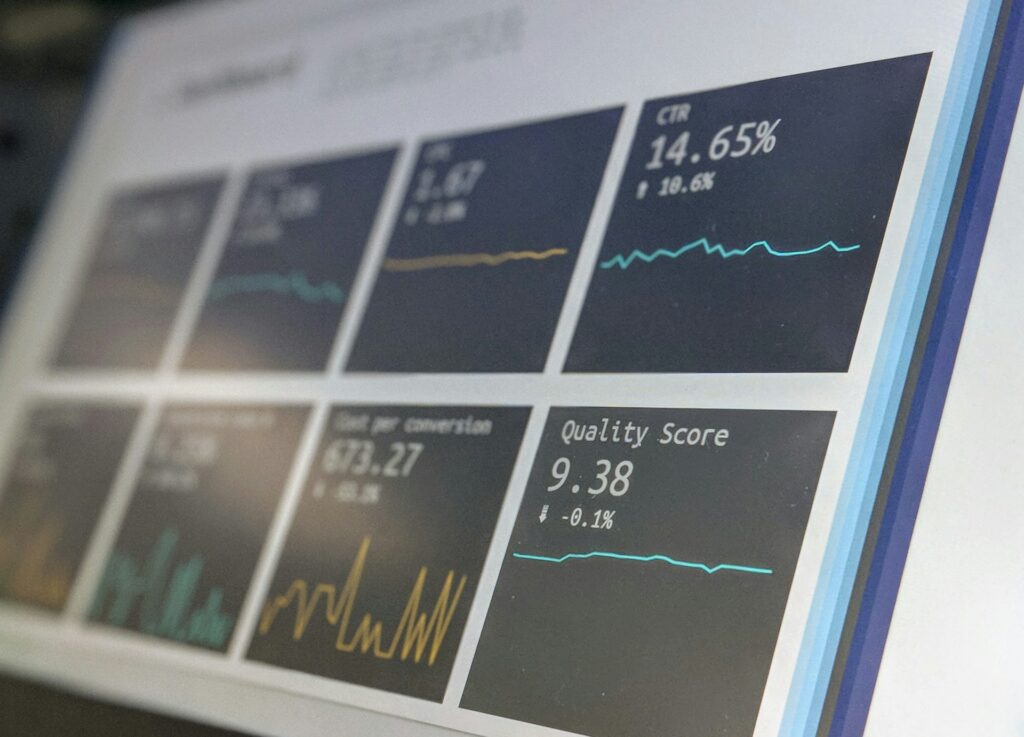In 2025, the demand for high-speed internet at events has surged. From outdoor music festivals to large tech expos, event organizers can no longer deal with unreliable WiFi or overloaded networks. As the expectations of attendees, exhibitors, and organizers rise, a new solution has emerged in the event technology landscape: Starlink satellite internet rental.
Once thought of as a futuristic fix for remote areas, Starlink—developed by SpaceX—has quickly become a popular internet option for events of all sizes. Its main benefits? High-speed, low-latency, and consistently reliable internet service, even in the toughest bandwidth environments.
So, what is pushing this major change? Why are more event planners opting for Starlink rental for events instead of traditional setups?
The Connectivity Crunch at Events
Let’s take a step back.
In 2018, it was enough for events to provide basic WiFi and a few Ethernet ports for VIP booths. Fast forward to today, and things have changed dramatically. Events are now dynamic, entrepreneurial ecosystems. They’re live-streamed, hybrid, and immersive—where everything is focused on digital engagement and real-time connectivity.
A 2024 study by EventMB found that over 82% of event attendees expect seamless internet access throughout a venue. Meanwhile, 69% of exhibitors say connectivity directly affects their event ROI. This shift is due to more interactive booths, mobile apps, live polling, VR and AR experiences, and real-time data collection.
It’s not just about emails and social media anymore. We’re seeing live drone feeds from sports festivals, 4K streaming from fashion shows, and NFT minting stations at art expos—all of which require strong, high-capacity internet.
This evolution has also empowered event-tech startups and independent creators. The ability to connect and scale quickly is essential not only for large event producers but also for small entrepreneurial teams launching brand activations, e-commerce pop-ups, or experience-based micro-events.
Starlink’s Rise as a Trusted Event Solution
Starlink was originally launched to close the digital gap in rural communities. Now, its satellite-based network has found a surprising role in the event industry. With a constellation of over 5,000 low-earth orbit satellites (as of early 2025), Starlink provides latency as low as 25ms and download speeds over 200 Mbps—enough to support thousands of users simultaneously.
But what makes it appealing to event planners—and particularly to agile entrepreneurs?
Portability: Starlink terminals can be set up anywhere—whether in a desert, a forest, on a rooftop, or a temporary stage in a remote location. That kind of flexibility is gold for creative teams producing niche or guerrilla-style events.
Quick Setup: Traditional fiber installation takes weeks or even months. Starlink can be operational in under an hour, allowing lean event startups and solo entrepreneurs to build professional-grade infrastructure with limited lead time.
Independence from Local ISPs: No need to deal with red tape, permits, or local infrastructure challenges—especially valuable for entrepreneurs looking to test new event models in under-connected regions.
High Resilience: Unlike cellular-based WiFi, Starlink is not affected by local cell tower congestion, making it a more predictable backbone for payment processing, attendee engagement tools, and streaming.
The 2025 Event Landscape: Bigger, Bolder, and More Connected
Events in 2025 are unlike anything we’ve seen before. They are not just gatherings; they are high-tech showcases and entrepreneurial stages. The 2025 CES in Las Vegas welcomed over 135,000 attendees, with more than 30% of the exhibits relying on AR, VR, and real-time cloud streaming. Organizers had to use multiple satellite systems, including Starlink, to ensure smooth digital experiences.
Likewise, Burning Man 2024 marked a change. The remote desert event had struggled with internet access in the past. Last year, artists live-streamed their installations, attendees used a live map to find camps, and commerce occurred digitally—all thanks to Starlink rental solutions.
Meanwhile, a new generation of event entrepreneurs is leaning into mobile, scalable experiences. From flash fashion shows in Malibu to founder-led tech roadshows in rural states, events are happening in unconventional locations—parking lots, remote vineyards, pop-up domes—where there’s zero internet infrastructure. Starlink makes these ventures viable and scalable without enormous capital investments.
For digital-first founders, Starlink represents a kind of “infrastructure-as-a-service”, unlocking access to connectivity that previously required deep partnerships, months of planning, or fixed venues.
Internet Expectations in the Age of AI and Immersion
Another key factor driving demand for reliable internet is the growth of AI-powered event experiences.
Chatbots, real-time analytics, facial recognition check-ins, AI-generated video booths, and live content summarization are now common at trade shows and conferences. These technologies require not just speed, but also zero latency. Event attendees no longer accept buffering or dropped connections, especially when engaging with futuristic tech experiences.
Additionally, with 5G not delivering the widespread experience many expected, Starlink has stepped up to fill the reliability gap—especially in hybrid venues where cellular signals can vary. For tech entrepreneurs demoing their latest tools, the importance of a dependable network can’t be overstated—it’s often the difference between closing investors or losing them to a failed demo.
The Green Factor: Sustainable Connectivity
It’s important to highlight that Starlink aligns with the sustainability goals of many modern event planners and entrepreneurial brands focused on ESG.
Events face increasing pressure to reduce their environmental impact. Traditional internet solutions often require generators, trenching, and lengthy, energy-intensive installations. Starlink kits are compact, energy-efficient, and can run on portable solar arrays, making them a great choice for eco-conscious companies and startup founders looking to lead with purpose.
For instance, at GreenBuild 2025, the world’s largest conference on sustainable building, the organizers proudly stated they powered the event entirely with renewable energy, including solar-powered Starlink stations.
“Starlink Saved the Day at Our Festival”
Michael R., the technical director of a three-day indie music festival in Montana, shared his experience:
“We expected 5,000 attendees, but the local ISP failed us a week before the event. No cell provider could promise enough coverage. Someone suggested Starlink rental. We got three units overnight, and it honestly saved the event. Vendors could operate their POS systems, artists posted updates, and our team coordinated through cloud tools. There were no hiccups.”
Michael noted that one of the vendors—a local coffee startup—processed over 1,000 sales using their mobile POS system over Starlink. “If the internet was down, that’s a full day of lost revenue,” he said.
Stories like this are becoming more common. As of 2025, over 22% of outdoor event organizers in North America report using satellite internet solutions, up from just 6% in 2022 (source: EventTechMonitor Q1 2025).
What to Consider Before Renting Starlink
While Starlink rental is a revolutionary option, it’s not a one-size-fits-all answer. Organizers—especially new founders and agile teams—should consider:
User Density: One Starlink unit typically supports 100–200 concurrent users. Larger events will need multiple units and a mesh WiFi setup.
Line of Sight: Starlink dishes need a clear view of the sky. Urban areas with tall buildings may require strategic placement.
Redundancy: For mission-critical tasks, like ticketing or live streaming, combine Starlink with LTE backup or bonded failover to mitigate risk.
Why Starlink Rental Is Now a Line Item
In 2023, Starlink was seen as a “cool backup” option. By 2024, it became an emergency tool. But in 2025, it’s established itself as a standard line item in event production budgets—alongside lighting, security, and power.
Its role is particularly notable in the rise of entrepreneur-led event brands, many of which rely on modular, location-independent setups. Internet access is no longer a luxury—it’s a business-critical input, and startups are building entire business models around this level of agility.
Numerous providers now offer Starlink rental, but one of the leading names simplifying access for event professionals is TradeShowInternet. They offer bundled Starlink kits tailored for events, with optional mesh WiFi, network monitoring, and on-site setup for added peace of mind.
The Future of Event Internet Is Satellite-First
As events continue to evolve—becoming more decentralized, hybrid, and content-driven—the demand for fast, portable, and reliable internet solutions will keep growing. Starlink has proven it can deliver in real-world scenarios—at dusty campsites, urban rooftops, forest clearings, and beachfront tech summits.
For event planners, brand creators, and digital entrepreneurs, Starlink rental is no longer just an option—it’s a strategic enabler.
The post The Game-Changer Behind Seamless Event Connectivity in 2025 appeared first on Entrepreneurship Life.































